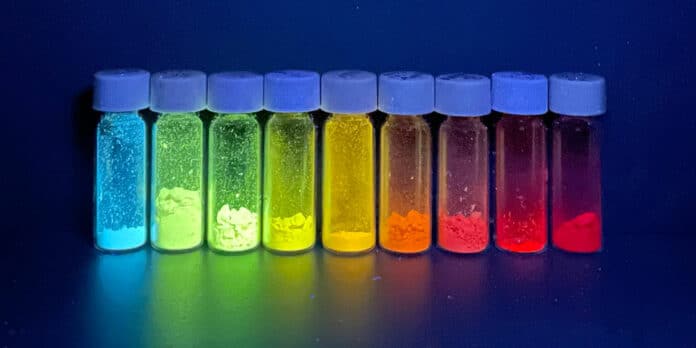Developing color-tunable fluorescent materials with simple chemical compositions that are easy to synthesize is highly desirable but practically challenging. Now, scientists at ETH Zurich have succeeded in using a new approach to produce a wide range of fluorescent dyes, including red, which was previously difficult to make.
The dyes are affordable and reasonably easy to make. The dyes are modularly structured polymers. Depending on their color, they have a variable number of subunits. The subunits used are easily synthesized by chemists or are readily accessible on the market as simple compounds.
Together with scientists from RMIT University in Melbourne, the team developed artificial intelligence algorithms that help decide which molecule subunits are needed in what numbers for a particular color.
The fluorescent inks could be used as UV-activated security for banknotes, certificates, passports or to encrypt data. The process can also create inks with color-changing properties under sustained UV exposure. The scientists used two fluorescent inks, initially red, to illustrate this in their most recent work. One fluorescent ink turned blue after several minutes of UV irradiation, while the other remained red. Additionally, security elements may be added to this property.
Other applications for the new fluorescent molecules are in solar power plants, or they could one day be combined with semiconducting molecules to produce low-cost organic light-emitting diodes (OLEDs) for displays.
Journal Reference:
- Ye S, Meftahi N, Lyskov I, Tian T, Kumar S, Christofferson AJ, Winkler DA, Shih CJ, Russo S, Leroux JC, Bao Y: Machine Learning-Assisted Exploration of a Versatile Polymer Platform with Charge Transfer-Dependent Full-Color Emission, Chem, 2 January 2023. DOI: 10.1016/j.chempr.2022.12.003
